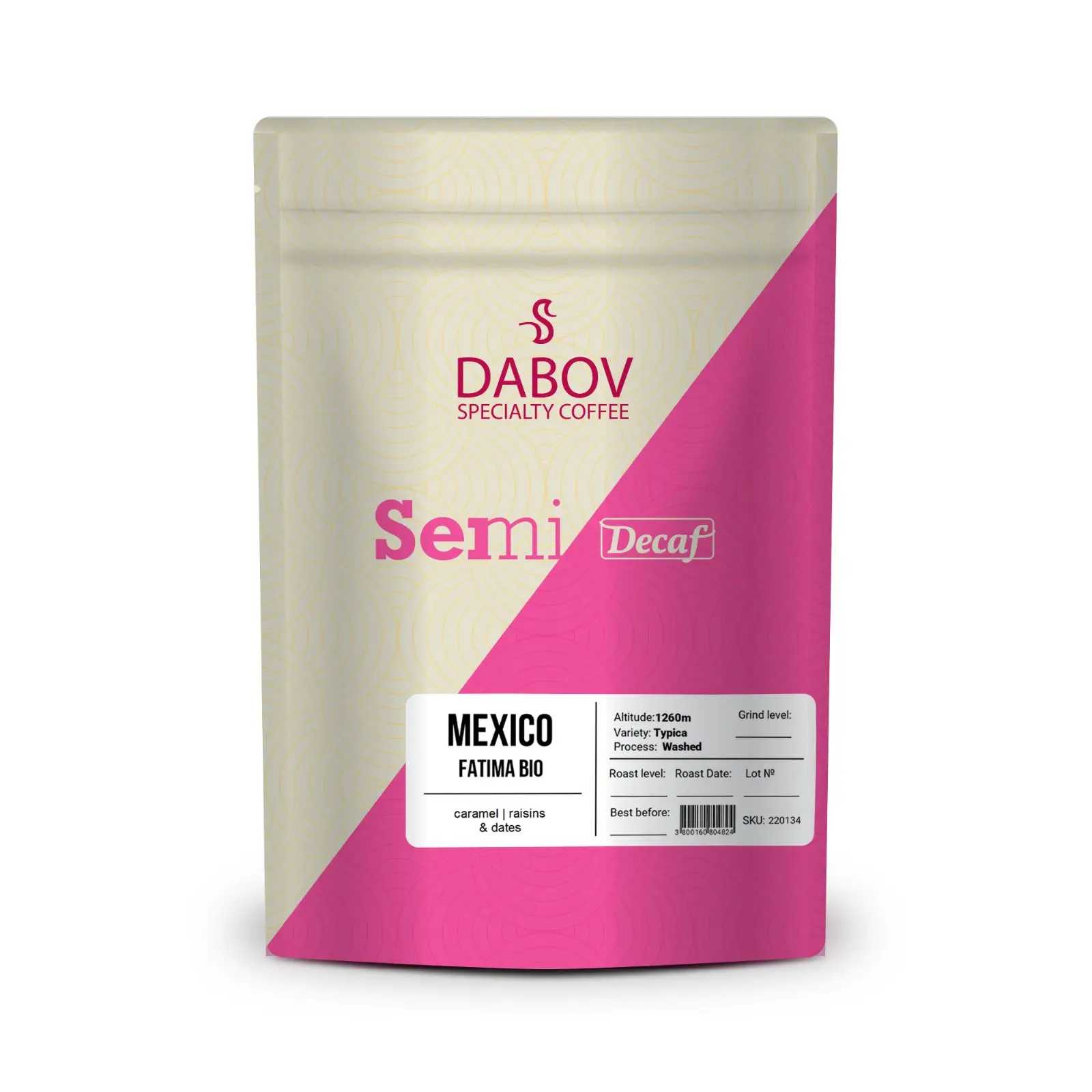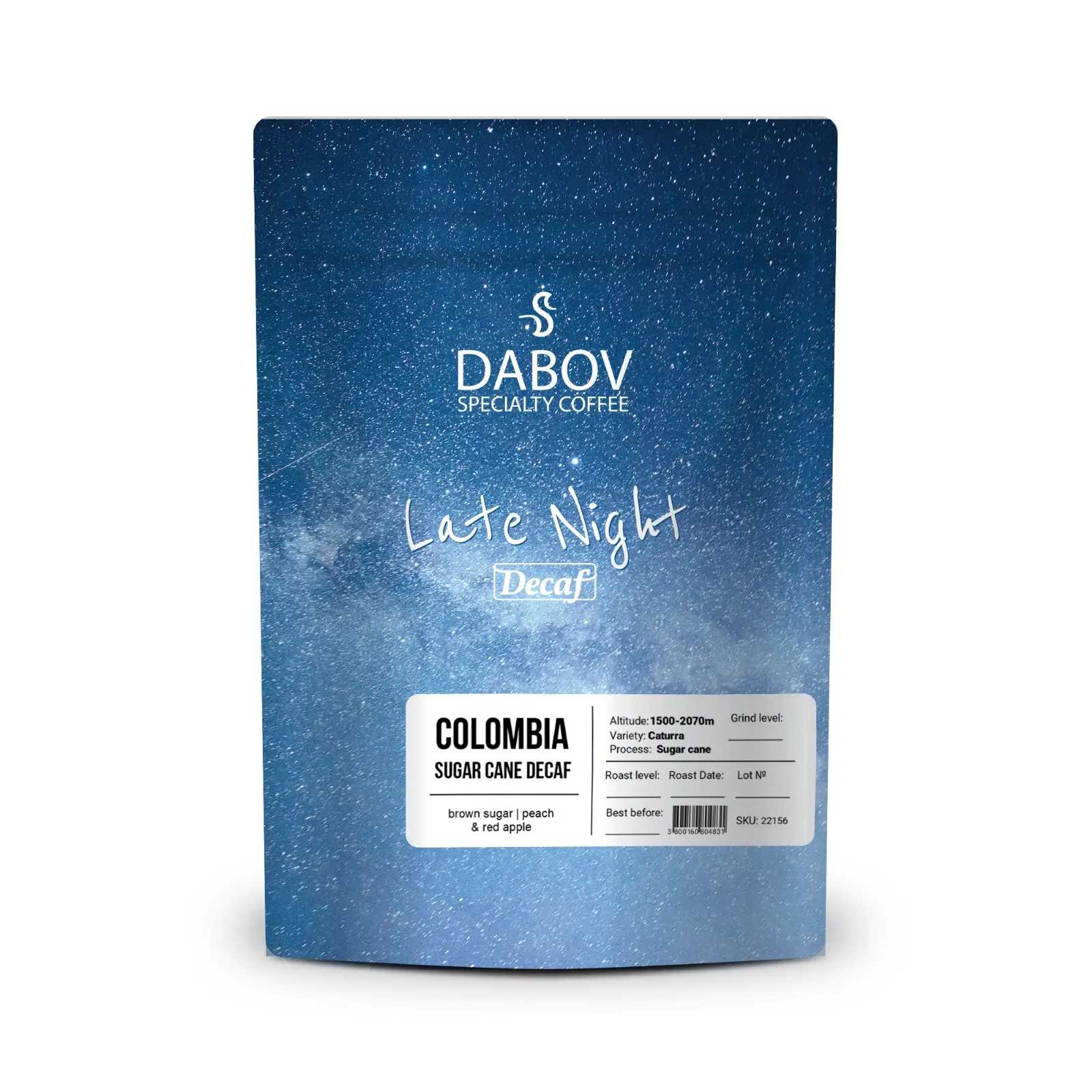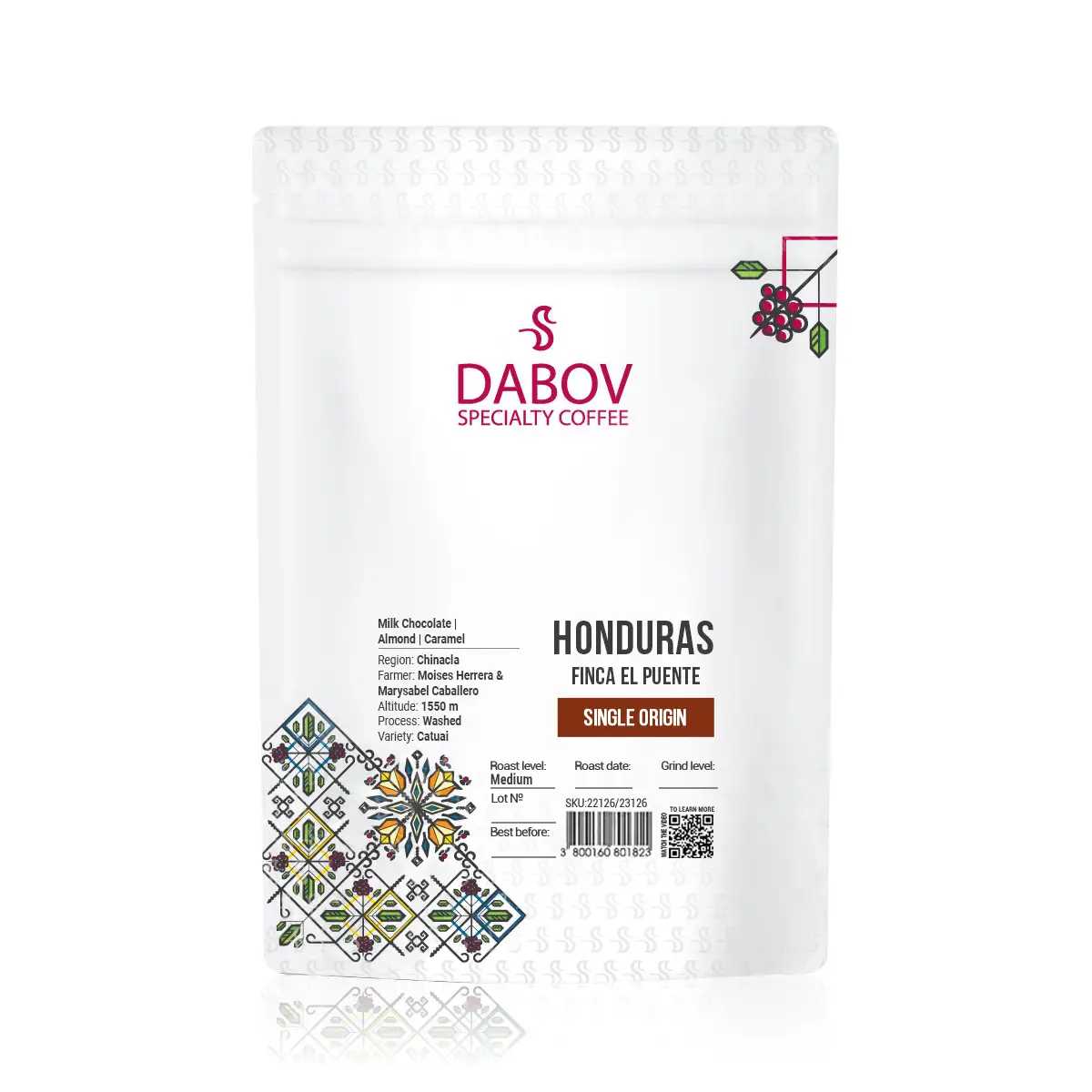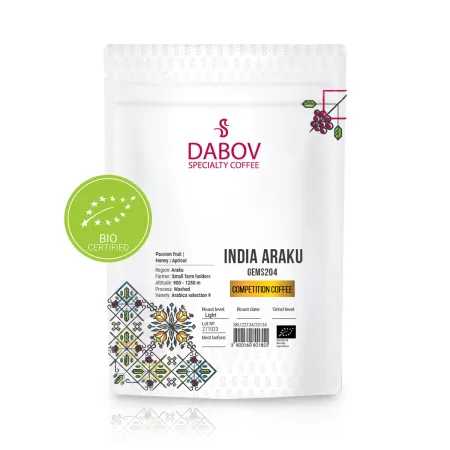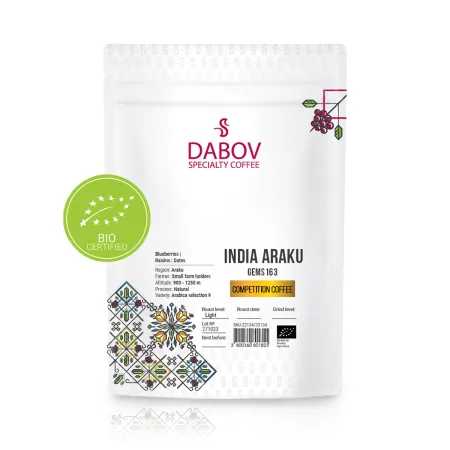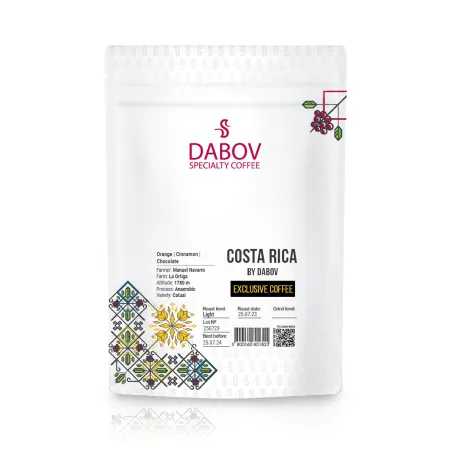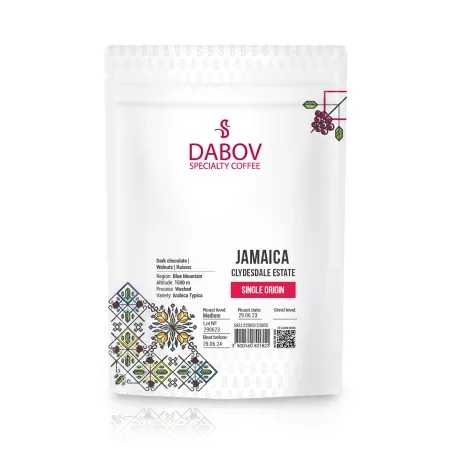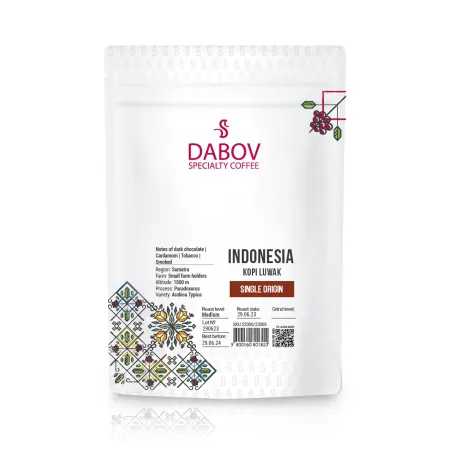The History and Evolution of Coffee Varieties
Coffee is more than just a beverage; it's a rich tapestry woven through centuries of culture, trade, and innovation. This article delves into the captivating history and evolution of coffee varieties, revealing fascinating stories from the legendary origins in Ethiopia to the contemporary trends affecting coffee cultivation today. From ancient cultivation methods to the rise of specialty coffees, we explore how each phase shapes the diverse flavors in your cup. Ideal for coffee enthusiasts and industry professionals alike, this guide enhances your understanding of coffee's journey and its significance in global culture. Join us as we uncover the stories behind the beans, their genetic diversity, and the prevailing trends transforming the coffee landscape.
Coffee, the aromatic elixir that fuels millions of people worldwide, has a rich and fascinating history that spans centuries and continents. From its humble beginnings in the highlands of Ethiopia to its current status as a global commodity and cultural icon, coffee has undergone a remarkable evolution. This article aims to explore the intricate tapestry of coffee's history, tracing the development of various coffee varieties and their impact on the industry and consumer preferences. By delving into the origins, cultivation practices, and genetic diversity of coffee, we hope to provide coffee enthusiasts and industry professionals with a comprehensive understanding of how this beloved beverage has transformed over time.
I. The Historical Context of Coffee
A. Origin of Coffee Consumption
The story of coffee begins in the lush, verdant highlands of Ethiopia, where legend has it that a goat herder named Kaldi first discovered the energizing effects of coffee berries. As the tale goes, Kaldi noticed his goats becoming unusually energetic after eating berries from a particular tree. Intrigued, he tried the berries himself and experienced a similar burst of energy. This discovery led to the first known uses of coffee, initially as a food source rather than a beverage.
The cultural significance of coffee in Ethiopia cannot be overstated. For centuries, coffee has been an integral part of Ethiopian social life, with elaborate coffee ceremonies serving as a means of bringing people together. These ceremonies, which can last for hours, involve roasting green coffee beans over an open flame, grinding them by hand, and brewing the coffee in a special pot called a jebena. The ritual emphasizes the importance of community and hospitality in Ethiopian culture, with coffee serving as the centerpiece of social gatherings.
As word of coffee's invigorating properties spread, its use expanded beyond Ethiopia. The earliest documented evidence of coffee consumption dates back to the 15th century in Yemen's Sufi monasteries. Monks used coffee to stay alert during long hours of prayer and meditation, marking the beginning of coffee's association with increased productivity and mental acuity.
B. Coffee's Journey Along Trade Routes
From its origins in Ethiopia, coffee embarked on a remarkable journey that would see it spread across the globe. The Arab world played a crucial role in this dissemination, with coffee first making its way to Yemen in the 16th century. Yemeni traders, recognizing the potential of this new commodity, began cultivating coffee plants and exporting beans to other parts of the Middle East.
The port city of Mocha, located on Yemen's southwestern coast, became synonymous with coffee trade. Mocha served as a vital hub, facilitating the export of coffee beans to Egypt, Persia, and Turkey. The popularity of coffee in these regions led to the establishment of coffeehouses, which became centers of social and intellectual discourse.
As coffee's popularity grew, so did its economic importance. The Ottoman Empire, recognizing the value of the coffee trade, sought to maintain a monopoly on coffee production and distribution. However, this monopoly was eventually broken when Dutch traders managed to smuggle coffee plants out of the Arab world in the late 17th century, setting the stage for coffee's global expansion.
The trade routes that facilitated coffee's spread were not limited to land. Maritime trade played a significant role in introducing coffee to new markets. Portuguese, Dutch, and British trading companies were instrumental in establishing coffee plantations in their colonies, further expanding coffee cultivation beyond its original regions.
C. Introduction of Coffee to Europe
Coffee's arrival in Europe in the 16th century marked a significant turning point in its history. Venice, with its strategic position as a major trading port, was one of the first European cities to embrace coffee. The beverage quickly gained popularity among the Venetian elite, who saw it as an exotic and fashionable drink.
As coffee spread to other parts of Europe, it faced initial resistance from some quarters. In 1615, when coffee reached Rome, it was met with suspicion by some members of the Catholic clergy who viewed it as a "Muslim drink." However, Pope Clement VIII, after tasting coffee himself, gave it his blessing, paving the way for its acceptance throughout Catholic Europe.
The establishment of coffeehouses in major European cities played a crucial role in coffee's rapid rise to popularity. In London, the first coffeehouse opened in 1652, and by 1700, there were over 2,000 coffeehouses in the city. These establishments became known as "penny universities" because for the price of a cup of coffee, patrons could engage in intellectual discussions on various topics.
Coffee's popularity in Europe coincided with the Age of Enlightenment, and coffeehouses became centers of philosophical and political discourse. The stimulating effects of caffeine, combined with the social nature of coffeehouses, contributed to the exchange of ideas that characterized this period of intellectual ferment.
II. Development of Coffee Cultivation
A. Early Cultivation Practices
The early cultivation of coffee in Ethiopia and the Arabian Peninsula was characterized by small-scale, localized production. In Ethiopia, coffee grew wild in the forests, and early cultivation practices involved managing these wild coffee plants rather than establishing formal plantations.
In Yemen, where coffee cultivation first expanded beyond Ethiopia, farmers developed more structured growing methods. They created terraced hillsides to maximize limited arable land and developed irrigation systems to support coffee plants in the arid climate. Yemeni farmers also pioneered the practice of sun-drying coffee cherries, a method still used in some regions today.
Early harvesting techniques were labor-intensive, with coffee cherries picked by hand to ensure only ripe fruits were selected. This selective harvesting, while time-consuming, contributed to the high quality of early coffee production.
Processing methods in these early days were relatively simple. After harvesting, coffee cherries were typically dried in the sun, with the dried cherries later hulled to reveal the green coffee beans inside. This method, known as the dry or natural process, is still used in some coffee-producing regions and is known for producing coffees with complex, fruity flavors.
B. Global Spread of Coffee Cultivation
The global spread of coffee cultivation was driven by a combination of factors, including colonialism, trade, and the increasing demand for coffee in Europe and beyond. As European powers established colonies in tropical and subtropical regions, they saw an opportunity to cultivate coffee on a large scale.
The Dutch were among the first to successfully transplant coffee outside of its native regions. In the late 17th century, they established coffee plantations in their colony of Java, Indonesia. The success of these plantations led to the expansion of coffee cultivation to other Dutch colonies, including Sumatra and Celebes (now Sulawesi).
The French soon followed suit, introducing coffee to their Caribbean colonies, particularly Martinique and Saint-Domingue (now Haiti). From these initial plantings, coffee cultivation spread throughout the Caribbean and into Central and South America.
The Portuguese played a significant role in bringing coffee to Brazil in the early 18th century. Brazil would go on to become the world's largest coffee producer, a position it still holds today. The vast expanses of suitable land and favorable climate in Brazil allowed for the development of large-scale coffee plantations, fundamentally changing the nature of coffee production.
As coffee cultivation spread, it adapted to new environments and growing conditions. This adaptation led to the development of distinct regional characteristics in coffee flavors, laying the groundwork for the concept of terroir in coffee production.
C. Establishment of Coffee Plantations
The establishment of coffee plantations around the world marked a significant shift in coffee production, moving from small-scale cultivation to large-scale agricultural operations. This transition was particularly pronounced in the Americas, where vast tracts of land were available for cultivation.
In Brazil, the coffee plantation system, known as fazendas, became the dominant model of coffee production. These large estates employed hundreds, sometimes thousands, of workers and utilized advanced agricultural techniques to maximize yields. The Brazilian model of coffee production, with its emphasis on quantity over quality, would have a lasting impact on the global coffee market.
In other parts of Latin America, such as Colombia, Costa Rica, and Guatemala, coffee cultivation developed on a smaller scale, often on family-owned farms. This model of production, while less efficient in terms of raw output, tended to produce higher quality coffees and allowed for more sustainable farming practices.
The establishment of coffee plantations was not without controversy. In many regions, the expansion of coffee cultivation led to deforestation and the displacement of indigenous populations. The labor practices on many plantations, particularly in the early days, were often exploitative, with workers subjected to harsh conditions and low wages.
Geographic and climatic considerations played a crucial role in the establishment of coffee plantations. Coffee plants thrive in specific conditions, requiring well-draining soils, adequate rainfall, and protection from frost. The "Coffee Belt," a band around the Earth between the Tropics of Cancer and Capricorn, became the primary region for coffee cultivation due to its suitable climate.
Altitude also emerged as a critical factor in coffee cultivation. Higher elevation plantations, particularly those growing Arabica coffee, tended to produce beans with more complex flavors due to the slower maturation process at higher altitudes.
III. Evolution of Coffee Varieties
A. Genetic Diversity of Coffee Beans
The genetic diversity of coffee plants is a fascinating aspect of coffee's evolution, with significant implications for flavor, cultivation practices, and the future of the industry. While there are over 100 species within the Coffea genus, two species dominate commercial coffee production: Coffea arabica (Arabica) and Coffea canephora (Robusta).
Coffea arabica, which accounts for approximately 60-70% of global coffee production, is prized for its complex flavor profile and lower caffeine content. Arabica is a tetraploid species, meaning it has four sets of chromosomes, which contributes to its genetic complexity and diversity. This genetic makeup allows for a wide range of flavor characteristics, from fruity and floral notes to chocolatey and nutty undertones.
Coffea canephora, commonly known as Robusta, makes up most of the remaining 30-40% of global coffee production. Robusta is a diploid species with two sets of chromosomes, resulting in a simpler genetic structure. This simplicity translates to a more straightforward flavor profile, often described as strong and bitter, with higher caffeine content than Arabica.
While Arabica and Robusta dominate the market, other coffee species exist, such as Coffea liberica and Coffea excelsa. These species, while less common, contribute to the overall genetic diversity of coffee and may play important roles in future breeding programs.
The genetic diversity within each species, particularly Arabica, has led to the development of numerous varieties and cultivars. These genetic variations result in differences in plant characteristics, disease resistance, yield, and flavor profiles, providing coffee farmers and breeders with a rich palette from which to develop new and improved coffee varieties.
B. Historical Breeding and Varietal Development
The history of coffee breeding and varietal development is a testament to human ingenuity and the adaptability of coffee plants. Early breeding efforts were largely informal, with farmers selecting and propagating plants that exhibited desirable characteristics such as high yield, disease resistance, or superior flavor.
One of the most significant developments in coffee breeding occurred in the 18th century with the discovery of the Typica variety. Typica, derived from plants taken from Ethiopia to Yemen and then to Java, became the progenitor of many of today's Arabica varieties. Its counterpart, Bourbon, named after the island where it was cultivated (now Réunion), was discovered in the early 19th century and also became a crucial parent variety for many modern cultivars.
The late 19th and early 20th centuries saw more systematic breeding efforts. In response to the devastating coffee leaf rust outbreak in Ceylon (now Sri Lanka) in the 1860s, which virtually wiped out coffee production in the region, breeders began focusing on developing disease-resistant varieties.
The creation of the Mundo Novo variety in Brazil in the 1940s marked a significant milestone in coffee breeding. This variety, a natural hybrid of Typica and Bourbon, exhibited high productivity and good cup quality, making it popular among Brazilian farmers.
Another major breakthrough came with the development of the Caturra variety in Brazil in the 1930s. Caturra, a natural mutation of Bourbon, was notable for its compact size, which allowed for higher planting densities and easier harvesting.
The latter half of the 20th century saw increased collaboration between coffee-producing countries in breeding efforts. The PROMECAFE program, established in 1978, brought together Central American countries to develop improved coffee varieties. This collaboration led to the creation of several important cultivars, including the Catimor group, which combined the quality of Caturra with the rust resistance of the Timor Hybrid.
C. Modern Innovations in Coffee Cultivation
In recent decades, coffee cultivation has seen significant advancements driven by scientific research, technological innovations, and changing market demands. Modern breeding programs utilize sophisticated techniques such as genetic mapping and marker-assisted selection to develop varieties with specific traits.
One of the most exciting developments in modern coffee breeding is the creation of F1 hybrids. These first-generation crosses between genetically distinct parents often exhibit hybrid vigor, resulting in plants with improved yield, disease resistance, and cup quality. The Centroamericano variety, developed by World Coffee Research and CIRAD, is an example of a successful F1 hybrid that combines high productivity with excellent cup quality and disease resistance.
Genetic research has also opened new avenues for coffee improvement. The sequencing of the coffee genome in 2014 provided researchers with a powerful tool for understanding the genetic basis of important traits. This knowledge is being applied to develop varieties better adapted to climate change, with improved drought tolerance and heat resistance.
Another area of innovation is in coffee processing methods. While traditional wet and dry processing methods remain common, new techniques such as anaerobic fermentation and carbonic maceration are being explored to create unique flavor profiles. These experimental processing methods are particularly popular in the specialty coffee sector, where there is a constant demand for novel and distinctive coffees.
Precision agriculture techniques are increasingly being applied to coffee cultivation. Remote sensing technologies, such as satellite imagery and drones, are used to monitor crop health and optimize irrigation and fertilization. These technologies allow for more efficient use of resources and can help improve overall coffee quality.
Sustainable farming practices have also become a focus of modern coffee cultivation. Agroforestry systems, which integrate coffee plants with shade trees and other crops, are gaining popularity for their environmental benefits and potential to improve coffee quality. These systems can help conserve biodiversity, improve soil health, and provide additional income streams for farmers.
IV. Coffee Varieties: An In-Depth Guide
A. Arabica vs. Robusta
The distinction between Arabica and Robusta coffee is fundamental to understanding the world of coffee varieties. These two species, with their distinct characteristics, form the backbone of global coffee production and consumption.
Arabica coffee, scientifically known as Coffea arabica, is renowned for its superior flavor profile. Originating in the highlands of Ethiopia, Arabica thrives in high-altitude environments, typically between 1,000 and 2,000 meters above sea level. The beans are generally larger and more oval-shaped compared to Robusta, with a lower caffeine content (typically 1.2-1.5%).
Flavor-wise, Arabica coffees are prized for their complexity and nuance. They often exhibit a wide range of flavors, from fruity and floral notes to chocolatey and nutty undertones. The acidity in Arabica coffee is typically higher than in Robusta, contributing to a brighter, more vibrant cup. However, Arabica plants are more susceptible to pests and diseases, particularly coffee leaf rust, and require more careful cultivation.
Robusta coffee, or Coffea canephora, is hardier and more resistant to disease than Arabica. It can grow at lower altitudes and tolerates warmer temperatures, making it easier and less expensive to cultivate. Robusta beans are smaller and rounder than Arabica, with a higher caffeine content (2-2.5%).
The flavor profile of Robusta is generally described as stronger and more bitter than Arabica. It often has earthy, woody notes and a distinctive peanutty aftertaste. While traditionally considered inferior to Arabica in terms of flavor, high-quality Robusta can contribute positively to espresso blends, adding depth and crema.
In terms of global production, Arabica accounts for about 60-70% of coffee produced worldwide, with Robusta making up the remainder. Arabica is the preferred choice for specialty coffee and high-end blends, while Robusta is more commonly used in instant coffee and as a filler in commercial blends to reduce costs.
The choice between Arabica and Robusta often comes down to a balance of flavor, cost, and intended use. While Arabica is generally preferred for its superior taste, Robusta has its place in the coffee world, particularly in espresso blends and in regions where its hardiness makes cultivation more feasible.
B. Emergence of Specialty Varieties
The specialty coffee movement, which gained momentum in the late 20th century, has led to increased interest in unique coffee varieties and their distinct flavor profiles. This trend has driven the exploration and cultivation of rare and heirloom varieties, as well as the development of new cultivars tailored to the demands of the specialty market.
One of the most celebrated specialty varieties is Geisha (also spelled Gesha), which rose to prominence in the early 2000s. Originally from Ethiopia, Geisha was rediscovered on a farm in Panama and quickly gained a reputation for its exceptional cup quality. Geisha coffees are known for their delicate floral and tea-like qualities, often with notes of jasmine, bergamot, and tropical fruits. The popularity of Geisha has led to its cultivation in other countries, including Costa Rica and Colombia.
Bourbon, one of the oldest Arabica varieties, has also seen a resurgence in the specialty coffee world. Prized for its sweet, complex flavor profile with notes of chocolate and fruit, Bourbon comes in several variations, including Yellow Bourbon and Pink Bourbon, each with its own unique characteristics.
Other notable specialty varieties include:
- SL28 and SL34: Developed in Kenya, these varieties are known for their bright acidity and complex fruit flavors.
- Pacamara: A hybrid of Pacas and Maragogipe varieties, Pacamara is known for its large bean size and unique flavor profile, often with floral and citrus notes.
- Typica: One of the oldest Arabica varieties, Typica is valued for its clean, sweet flavor and is the parent of many other varieties.
- Caturra: A natural mutation of Bourbon, Caturra is known for its good cup quality and is widely grown in Central and South America.
The emergence of these specialty varieties has coincided with a growing interest in coffee origins and processing methods. Single-origin coffees, which highlight the unique characteristics of a particular region or even a single farm, have become increasingly popular among coffee enthusiasts.
Market trends in specialty coffee have shifted towards emphasizing transparency and traceability. Consumers are increasingly interested in knowing not just the country of origin, but the specific farm or cooperative where their coffee was grown. This trend has led to closer relationships between roasters and producers, often resulting in higher prices paid for high-quality, unique varieties.
The specialty coffee movement has also driven innovation in processing methods. Experimental processing techniques, such as extended fermentation or anaerobic processing, are being used to create coffees with distinctive flavor profiles, further expanding the range of flavors available to consumers.
C. The Role of Terroir in Coffee Varietals
The concept of terroir, long associated with wine production, has gained increasing recognition in the coffee industry. Terroir refers to the environmental factors that affect a crop's phenotype, including the final flavor characteristics of the harvested product. In coffee, terroir encompasses a complex interplay of factors including climate, soil composition, altitude, and even the specific microorganisms present in the local ecosystem.
Climate plays a crucial role in coffee terroir. Factors such as temperature, rainfall patterns, and humidity levels all influence the development of coffee cherries and, consequently, the flavor of the beans. For example, coffees grown in regions with distinct wet and dry seasons often develop more complex flavor profiles due to the stress induced by the dry period, which can concentrate flavors in the cherry.
Altitude is another critical component of coffee terroir. Generally, coffees grown at higher elevations (typically above 1,200 meters) develop more slowly due to cooler temperatures, allowing for more complex flavor development. These high-altitude coffees are often characterized by bright acidity and floral or fruity notes.
Soil composition significantly impacts coffee flavor. Volcanic soils, rich in minerals, can contribute to the development of unique flavor characteristics. For instance, coffees grown in the volcanic soils of Hawaii or El Salvador often exhibit distinct mineral notes in their flavor profile.
The specific variety of coffee plant interacts with these environmental factors to produce unique flavor characteristics. Some varieties, like Geisha, seem to express their distinctive flavors more prominently in certain environments. This interaction between plant genetics and environment is at the heart of the terroir concept.
Processing methods also play a role in expressing terroir. The traditional natural (dry) process, where coffee cherries are dried with the fruit intact, tends to highlight the influence of terroir more prominently than washed processing methods.
Understanding and appreciating terroir has become increasingly important in the specialty coffee industry. Many roasters and coffee shops now provide detailed information about the terroir of their coffees, including altitude, soil type, and specific microclimates. This emphasis on terroir not only provides consumers with a deeper appreciation of their coffee but also helps to differentiate and add value to coffees from specific regions or even individual farms.
The concept of terroir in coffee is not just of interest to consumers and coffee professionals; it also has important implications for coffee farmers. By understanding and leveraging their unique terroir, farmers can potentially produce more distinctive and valuable coffees, helping to ensure the economic sustainability of their operations in an increasingly competitive global market.
V. Global Trends Shaping Coffee Variety Evolution
A. Consumer Preferences and Trends
Consumer preferences and trends play a significant role in shaping the evolution of coffee varieties and cultivation practices. In recent years, there has been a noticeable shift towards higher quality and more diverse coffee experiences, driven by an increasingly knowledgeable and discerning consumer base.
One of the most prominent trends is the growing demand for specialty coffee. Consumers are showing greater interest in single-origin coffees, unique varietals, and experimental processing methods. This trend has encouraged farmers to focus on quality over quantity, often leading to the cultivation of heirloom varieties or the development of new cultivars that offer distinctive flavor profiles.
The rise of the "third wave" coffee movement has further emphasized the importance of transparency and traceability in the coffee supply chain. Consumers want to know not just where their coffee comes from, but also how it was grown and processed. This demand for information has led to closer relationships between roasters and producers, often resulting in direct trade arrangements that can benefit farmers through higher prices for their crops.
Flavor preferences have also evolved. While traditional coffee flavors remain popular, there's growing appreciation for more complex and nuanced taste profiles. Fruity, floral, and tea-like notes, once considered defects in coffee, are now sought after by many consumers. This shift has led to increased interest in varieties like Geisha and processing methods that highlight these flavors.
Sustainability has become a key concern for many coffee consumers. There's growing demand for coffees that are not only high quality but also environmentally friendly and socially responsible. This trend is influencing farming practices, with many producers adopting more sustainable cultivation methods to meet consumer expectations and gain certifications like Organic or Rainforest Alliance.
The ready-to-drink (RTD) coffee market has seen significant growth, particularly among younger consumers. This trend is influencing coffee production, with some varieties being selected or developed specifically for their performance in cold brew or other RTD applications.
Health consciousness is another factor shaping consumer preferences. While coffee is generally considered a healthy beverage, there's growing interest in coffees with specific health benefits. This has led to increased research into the health properties of different coffee varieties and processing methods.
B. The Impact of Climate Change
Climate change poses one of the most significant challenges to coffee cultivation and is already having a profound impact on coffee variety evolution. Rising temperatures, changing rainfall patterns, and increased frequency of extreme weather events are altering the suitability of traditional coffee-growing regions and affecting the quality and yield of coffee crops.
One of the most immediate effects of climate change is the upward shift of suitable growing areas. As temperatures rise, the optimal altitude for coffee cultivation is moving higher up mountain slopes. This shift is particularly problematic for Arabica coffee, which is more sensitive to temperature changes than Robusta. Some estimates suggest that by 2050, the area suitable for Arabica cultivation could decrease by up to 50% in some major producing countries.
Changing weather patterns are also affecting coffee plant phenology – the timing of flowering and fruit development. Unpredictable rainfall can lead to irregular flowering patterns, potentially reducing yields and quality. Extreme weather events, such as prolonged droughts or excessive rainfall, can damage crops and increase the prevalence of pests and diseases.
In response to these challenges, there's a growing focus on developing climate-resilient coffee varieties. Breeding programs are working to create cultivars that can tolerate higher temperatures, resist drought, and withstand increased pest and disease pressure. For example, the Marsellesa variety, developed by World Coffee Research, shows good resistance to coffee leaf rust and tolerance to high temperatures.
There's also increased interest in forgotten or underutilized coffee species that might be better adapted to changing climatic conditions. Species like Coffea stenophylla, rediscovered in Sierra Leone, show promise for their heat tolerance and flavor quality.
Farmers are adapting their cultivation practices to mitigate the effects of climate change. This includes implementing agroforestry systems to provide shade and reduce temperature stress, improving soil management to increase water retention, and diversifying crops to reduce economic risk.
The specialty coffee industry is particularly vulnerable to climate change, as the delicate flavors prized in high-quality coffees are easily affected by environmental stress. This has led to increased research into how climate affects flavor development in coffee, with the aim of maintaining quality even as growing conditions change.
Climate change is also driving a geographical shift in coffee production. Some traditional coffee-growing regions may become unsuitable, while new areas may open up for cultivation. This shift could have significant economic and social implications for coffee-producing countries and communities.
C. Certification and Ethical Sourcing
The rise of certification programs and ethical sourcing initiatives has had a significant impact on coffee variety distribution and popularity. These programs aim to promote sustainable farming practices, ensure fair compensation for farmers, and provide consumers with assurance about the ethical and environmental credentials of their coffee.
Some of the most prominent certification schemes in the coffee industry include:
- Fair Trade: Focuses on ensuring fair prices and working conditions for farmers.
- Organic: Certifies that coffee is grown without synthetic pesticides or fertilizers.
- Rainforest Alliance: Emphasizes environmental conservation and sustainable livelihoods.
- UTZ Certified: Promotes sustainable farming practices and better opportunities for farmers.
These certification programs have influenced coffee variety selection and cultivation practices in several ways:
Firstly, they often require or encourage the use of shade-grown coffee systems, which can impact variety selection. Some varieties perform better under shade conditions, leading to increased cultivation of these types.
Secondly, organic certification has led to renewed interest in varieties that are naturally resistant to pests and diseases, as these are easier to cultivate without synthetic pesticides. This has contributed to the popularity of some heirloom varieties and driven research into developing new, naturally resistant cultivars.
The emphasis on sustainability has also led to increased interest in varieties that are well-adapted to local conditions and require fewer inputs. This trend supports the conservation of local coffee genetic diversity and can result in more distinctive, terroir-driven coffees.
Fair Trade and similar programs that focus on fair compensation have allowed some farmers to invest in higher-quality varieties or experimental processing methods, contributing to the diversity of coffees available in the market.
However, certification programs have also faced criticism. The cost of certification can be prohibitive for some small-scale farmers, potentially excluding them from premium markets. There are also concerns about the effectiveness of some programs in delivering tangible benefits to farmers and the environment.
In response to these issues, there's a growing trend towards direct trade relationships between roasters and producers. These arrangements often go beyond formal certification requirements, allowing for more tailored approaches to sustainability and quality improvement.
The specialty coffee industry has been particularly active in promoting transparency and ethical sourcing. Many specialty roasters provide detailed information about their sourcing practices and the specific farms or cooperatives they work with, often paying significantly above market prices for high-quality, sustainably produced coffees.
This emphasis on ethical sourcing and sustainability is likely to continue shaping the coffee industry, influencing not only which varieties are cultivated but also how they are grown and processed. As consumers become increasingly conscious of the environmental and social impacts of their coffee consumption, the industry will need to continue evolving to meet these expectations while also addressing the challenges posed by climate change and economic pressures.
VI. Future of Coffee Varieties
A. Prospects for New Coffee Breeds
The future of coffee varieties holds exciting possibilities, driven by advances in breeding techniques, genetic research, and a growing understanding of the challenges facing coffee cultivation. Several key areas are likely to shape the development of new coffee breeds in the coming years:
- Climate Resilience: With climate change posing a significant threat to coffee production, breeding programs are focusing on developing varieties that can withstand higher temperatures, irregular rainfall patterns, and increased pest and disease pressure. This may involve creating hybrids between Arabica and more resilient species like Robusta or exploring the potential of other Coffea species.
- Disease Resistance: The ongoing battle against diseases like coffee leaf rust continues to drive breeding efforts. Future varieties will likely incorporate multiple resistance genes to provide more durable protection against evolving pathogens.
- Flavor Innovation: As consumer palates become more sophisticated, there's growing interest in varieties with unique flavor profiles. Breeders are exploring ways to enhance and diversify flavor characteristics while maintaining other desirable traits like yield and disease resistance.
- Improved Yield and Quality: Balancing productivity with cup quality remains a key goal. Future breeds may leverage advanced genomic techniques to identify and combine genes responsible for both high yield and superior flavor.
- Adaptability: Given the diversity of coffee-growing regions, breeders are working on developing varieties that can adapt to a wide range of environmental conditions, potentially expanding the geographical range of coffee cultivation.
- Nutritional Content: There's growing interest in the health benefits of coffee. Future breeding programs may focus on enhancing beneficial compounds in coffee, potentially creating varieties with specific health-promoting properties.
- Low-Caffeine Varieties: While not new, there's ongoing work to develop naturally low-caffeine Arabica varieties that maintain desirable flavor profiles, providing an alternative to traditional decaffeination processes.
The development of F1 hybrid varieties is likely to play a significant role in the future of coffee breeding. These hybrids offer the potential to combine desirable traits from different parent lines rapidly, allowing for more responsive breeding programs.
Genetic editing techniques, such as CRISPR, may also become important tools in coffee breeding, allowing for more precise modifications to plant genomes. However, the use of such technologies in coffee remains controversial and will likely face regulatory and consumer acceptance challenges.
B. Sustainability Efforts in Coffee Cultivation
Sustainability is becoming increasingly central to coffee cultivation, driven by environmental concerns, economic pressures, and consumer demand. Future efforts in sustainable coffee production are likely to focus on several key areas:
- Agroforestry Systems: The integration of coffee plants with shade trees and other crops is likely to become more widespread. These systems can help conserve biodiversity, improve soil health, provide additional income streams for farmers, and potentially mitigate some effects of climate change.
- Water Management: As water scarcity becomes a more pressing issue in many coffee-growing regions, there will be increased focus on efficient irrigation systems and water-conserving cultivation practices. This may include the development of more drought-tolerant varieties and improved processing methods that require less water.
- Soil Conservation: Maintaining and improving soil health is crucial for sustainable coffee production. Future efforts may focus on practices like cover cropping, composting, and minimal tillage to preserve soil structure and fertility.
- Integrated Pest Management: Reducing reliance on chemical pesticides through biological control methods, trap crops, and the cultivation of pest-resistant varieties will be a key aspect of sustainable coffee farming.
- Carbon Sequestration: Coffee farms, particularly those using agroforestry systems, have significant potential for carbon sequestration. Future sustainability efforts may focus on quantifying and maximizing this potential, possibly linking it to carbon credit systems.
- Renewable Energy: The adoption of renewable energy sources, such as solar power for drying coffee or biogas from coffee pulp, can help reduce the carbon footprint of coffee production.
- Circular Economy Approaches: Finding uses for coffee by-products, such as using coffee cherry pulp for cascara tea or as a feedstock for mushroom cultivation, can help create additional value streams and reduce waste.
Technology is likely to play an increasing role in sustainable coffee cultivation. Precision agriculture techniques, using sensors, drones, and data analytics, can help optimize resource use and improve crop management. Blockchain technology may be employed to enhance traceability and transparency in the coffee supply chain.
Education and knowledge sharing will be crucial in promoting sustainable practices. Initiatives that facilitate farmer-to-farmer learning and provide access to the latest research and best practices will be important in disseminating sustainable cultivation methods.
The role of certifications in promoting sustainability may evolve, with a potential shift towards more holistic, outcome-based approaches rather than prescriptive standards. There may also be increased emphasis on region-specific sustainability initiatives that are tailored to local environmental and social conditions.
C. The Continued Importance of Coffee Diversity
Maintaining and enhancing coffee genetic diversity will be crucial for the future of the industry. The importance of coffee diversity extends beyond just providing varied flavor profiles for consumers; it plays a vital role in the resilience and adaptability of coffee as a crop.
Genetic diversity provides the raw material for breeding programs, allowing for the development of new varieties that can address emerging challenges such as climate change, new diseases, or changing market demands. The wider the genetic pool, the more options breeders have to create resilient and productive coffee plants.
Conservation of wild coffee species and varieties is becoming increasingly important. Many of these plants, particularly those native to Africa, are under threat from deforestation and climate change. Efforts to protect these wild populations, both in their natural habitats (in situ conservation) and in gene banks (ex situ conservation), will be crucial for maintaining coffee genetic diversity.
The specialty coffee market's emphasis on unique and distinctive coffees is likely to continue driving interest in rare and heirloom varieties. This trend not only provides economic incentives for maintaining diverse coffee cultivars but also helps to preserve traditional farming practices and cultural heritage in coffee-growing regions.
There's growing recognition of the importance of on-farm diversity. Encouraging farmers to cultivate multiple varieties can help spread risk and improve resilience to pests, diseases, and climate variability. This approach aligns with broader agroecological principles that emphasize diversity as a key component of sustainable farming systems.
Research into underutilized coffee species may reveal new possibilities for the industry. Species like Coffea stenophylla or Coffea eugenioides, while currently not commercially significant, may have traits that become valuable in the face of changing environmental conditions or consumer preferences.
The concept of participatory plant breeding, where farmers are actively involved in the variety selection and breeding process, may gain more traction. This approach can help ensure that new varieties are well-suited to local conditions and meet the needs of farmers as well as the market.
As our understanding of the coffee genome improves, there may be increased efforts to catalog and preserve the genetic diversity of coffee. This could involve creating comprehensive genetic libraries of coffee varieties and wild species, providing a valuable resource for future breeding efforts.
The continued importance of coffee diversity underscores the need for collaborative international efforts in coffee research and conservation. Initiatives that bring together researchers, farmers, and industry stakeholders from different coffee-producing countries will be crucial in addressing the global challenges facing coffee production.



